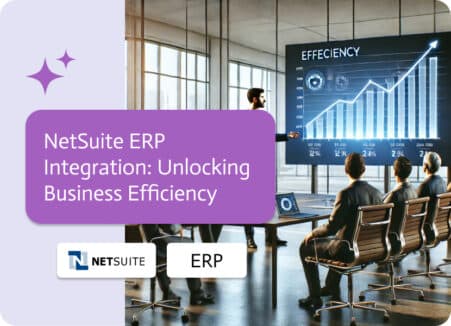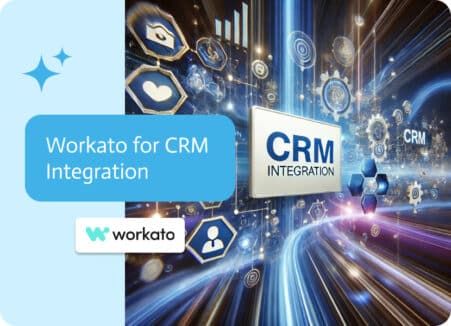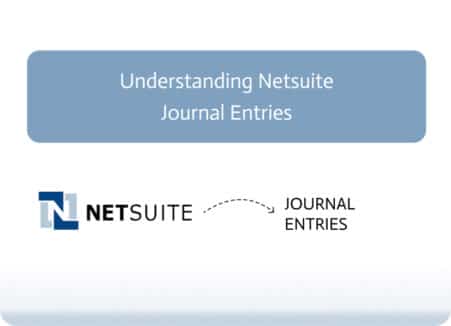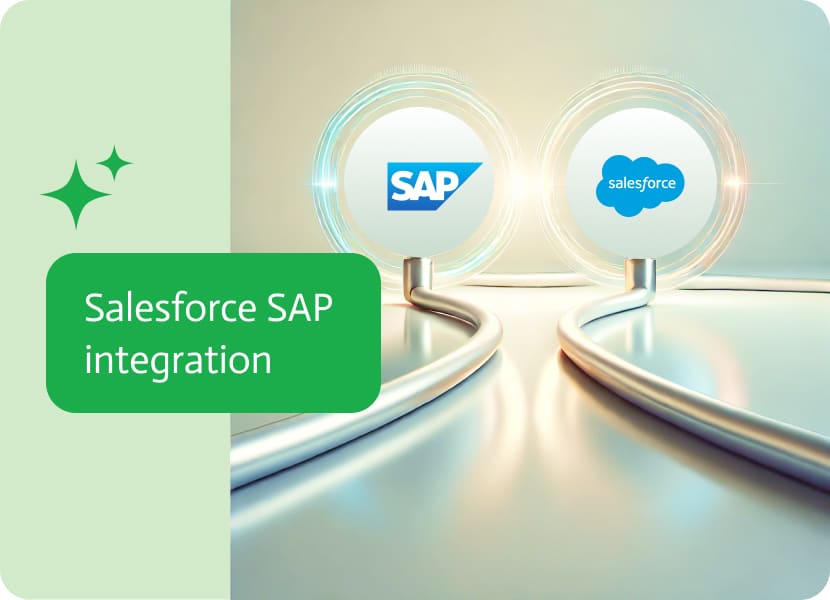
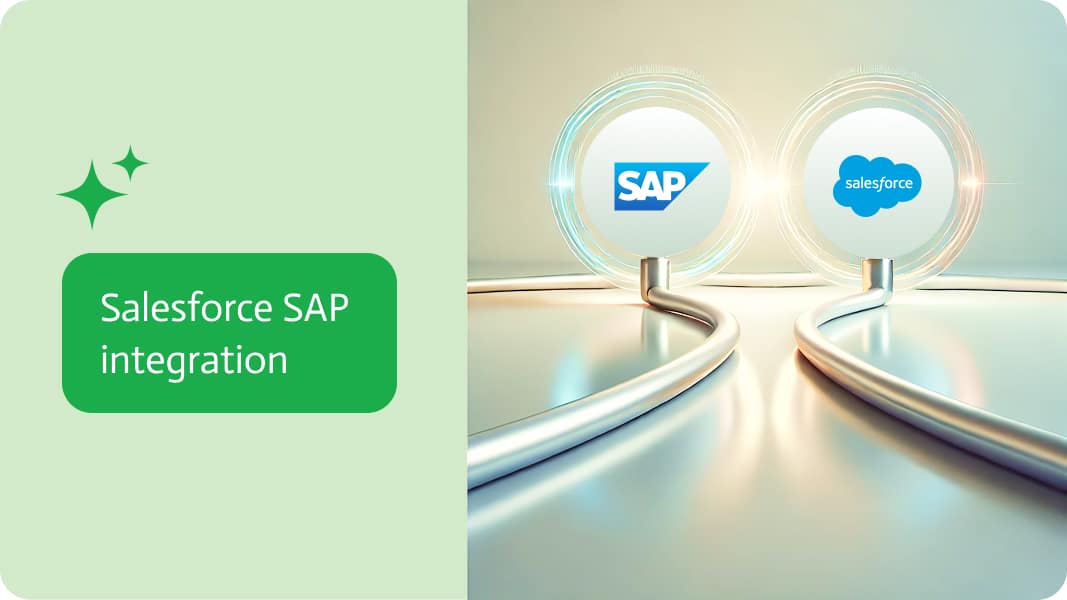
Salesforce SAP integration
In today’s competitive business landscape, efficient management of customer relationships and internal operations is key to success. Salesforce, a market-leading CRM (Customer Relationship Management) platform, and SAP, a dominant ERP (Enterprise Resource Planning) system, are two powerful tools that, when integrated, can drive operational efficiency, improve customer experiences, and provide real-time insights into business processes. The Salesforce-SAP integration serves as a bridge between sales and operational functions, allowing organizations to align customer-facing activities with back-office processes seamlessly.
In this comprehensive guide, we’ll explore the benefits, challenges, best practices, and real-world use cases of Salesforce-SAP integration to help you make the most of this powerful combination. If you’re looking to enhance your business processes and optimize data flow, this integration might be the solution you’re looking for.
Why Salesforce-SAP Integration Matters
Salesforce-SAP integration connects your sales, customer service, and marketing data with your core business operations such as finance, supply chain, and inventory management. This allows companies to automate workflows, improve collaboration between departments, and get a 360-degree view of their customers and operations.
A successful integration can provide several key benefits:
- Real-time data access for better decision-making
- Enhanced operational efficiency through automated processes
- Centralized data that reduces discrepancies and duplication
- Improved customer experiences through faster order processing and accurate data
- Scalability to accommodate business growth and changing needs
By integrating Salesforce and SAP, organizations can break down silos between departments and make sure that the right information flows to the right people at the right time. This can ultimately lead to better customer outcomes and a more agile business.
Integration Tools: Middleware Solutions and Direct Connectors
There are two main approaches to Salesforce-SAP integration: middleware solutions and direct connectors. Each approach has its pros and cons.
- Middleware Solutions: Middleware acts as an intermediary that translates and transforms data between Salesforce and SAP. Middleware tools such as Noca AI, MuleSoft, SnapLogic, Workato and Boomi offer flexibility and can support complex data flows. Middleware solutions are ideal for companies with evolving integration needs, as they are highly adaptable.
- Direct Connectors: Direct connectors, like the SAP Cloud Platform Integration, provide a more straightforward connection between Salesforce and SAP. They are typically faster to implement but may lack the flexibility of middleware. Direct connectors work well for organizations with simpler integration needs or those looking for a quicker setup.
Benefits of Salesforce-SAP Integration
The Salesforce-SAP integration can transform your business operations. Here’s a closer look at some of the key benefits:
1. Enhanced Data Management
With Salesforce-SAP integration, businesses can streamline their data management processes. Data from both systems can be consolidated, eliminating redundancy and discrepancies. Advanced analytics capabilities allow organizations to generate comprehensive reports based on data from both systems. This provides better business intelligence and insights for making data-driven decisions.
For example, a company can pull sales pipeline data from Salesforce and combine it with financial performance data from SAP to forecast revenue more accurately.
2. Improved Operational Efficiency
Manual data entry can lead to errors, slow down processes, and drain valuable resources. Salesforce-SAP integration automates many of these tasks, minimizing manual input and reducing errors. This, in turn, speeds up internal processes and allows employees to focus on higher-value activities, such as closing deals or optimizing operations.
Real-time synchronization ensures that all relevant teams have access to updated information, improving cross-departmental collaboration. For example, sales teams can access up-to-date inventory levels from SAP directly within Salesforce, enabling them to provide more accurate delivery estimates to customers.
3. Real-time Processing and Cash Flow Management
By integrating Salesforce and SAP, organizations can benefit from real-time processing of customer orders, invoices, and payments. This not only improves cash flow management but also enhances customer satisfaction. For instance, a customer service representative can view an order’s status in real-time, make necessary updates, and ensure the order is processed without delays.
Real-time alerts and notifications can inform relevant departments of critical updates, ensuring timely action is taken. This can prevent bottlenecks in order fulfillment and billing processes.
4. Centralized Data Hub
A central data hub is another key benefit of Salesforce-SAP integration. By consolidating customer data, financial records, and operational information into a single system, organizations can gain a comprehensive view of their operations. This holistic view helps reduce data silos, improve communication, and enable more informed decision-making.
For example, a centralized system allows decision-makers to view sales data alongside financial performance metrics, helping them align business strategies with customer needs.
5. Competitive Advantage
In today’s fast-paced business environment, having real-time access to accurate data can provide a significant competitive edge. Salesforce-SAP integration empowers organizations to make swift, informed decisions based on comprehensive data insights. This can improve responsiveness to customer needs, optimize operations, and ultimately lead to better market performance.
Use Cases for Salesforce-SAP Integration
There are many real-world applications of Salesforce-SAP integration, and some of the most common use cases include:
1. Opportunity-to-Order Process
When a sales opportunity is marked as “Closed Won” in Salesforce, the order details can be automatically transferred to SAP for order processing. This eliminates the need for double-entry of data and reduces the risk of errors, ensuring a seamless transition from sales to operations.
2. Quote-to-Cash Process
The Quote-to-Cash process is another use case where Salesforce-SAP integration shines. This integration enables real-time updates on pricing and inventory, ensuring that sales teams can generate accurate quotes and expedite the order fulfillment process.
3. Account and Contact Synchronization
Ensuring consistent customer data across Salesforce and SAP is crucial for providing excellent service. With Salesforce-SAP integration, customer accounts and contact information can be automatically synchronized, reducing discrepancies and improving data quality.
4. Real-time Inventory Management
Sales teams can access real-time inventory data from SAP within Salesforce, allowing them to provide accurate delivery estimates and reduce order delays. This improves the overall customer experience and helps sales teams set realistic expectations.
5. Enhanced Analytics and Reporting
By combining Salesforce’s analytics capabilities with SAP’s data repository, organizations can gain deeper insights into their performance. For example, they can track sales trends, monitor financial metrics, and make more informed business decisions.
Challenges of Salesforce-SAP Integration
While the benefits are substantial, Salesforce-SAP integration comes with its own set of challenges:
1. Data Mapping Complexity
Mapping data fields between Salesforce and SAP can be complex, especially for organizations with customized workflows and legacy systems. It’s crucial to have a clear understanding of how data flows between systems and ensure that fields are accurately mapped to avoid discrepancies.
2. Security and Compliance
Data security is a top priority for any integration project. Organizations must ensure that sensitive data is protected during the integration process, especially when dealing with customer and financial information. Compliance with regulations such as GDPR is also critical.
3. Scope Creep and Project Delays
Integration projects can quickly grow in scope if not properly managed. Organizations must have a clear integration strategy and stick to it to avoid delays and cost overruns.
Best Practices for Salesforce-SAP Integration
To overcome challenges and ensure a successful Salesforce-SAP integration, follow these best practices:
- Define Clear Objectives: Clearly define the business processes and data fields that need to be integrated.
- Choose the Right Tools: Evaluate whether middleware or direct connectors best suit your business’s needs.
- Plan for Scalability: Ensure your integration solution can scale with your business as it grows.
- Test Thoroughly: Perform rigorous testing to ensure data flows smoothly between systems.
- Monitor and Maintain: Regularly monitor the integration to catch any issues early and ensure ongoing success.
Conclusion
Salesforce-SAP integration is a powerful tool for organizations looking to improve efficiency, enhance customer experiences, and gain real-time insights into their operations. By leveraging the strengths of both platforms, businesses can create a seamless flow of information, automate critical processes, and make data-driven decisions that drive growth.
The best way to achieve this integration seamlessly is through an iPaaS (Integration Platform as a Service) solution. iPaaS platforms are designed to handle the complexities of integration, providing flexibility, scalability, and ease of use. One standout example is Noca AI, an AI-first and NLP-first platform that simplifies the integration process. Noca AI uses artificial intelligence to suggest optimal data mappings and automate workflows, making it user-friendly for both technical and non-technical users. With its advanced security features and adaptability, Noca AI ensures that your SAP integration is efficient, future-proof, and easy to maintain, giving your organization a significant competitive edge.
